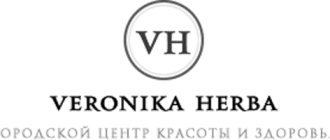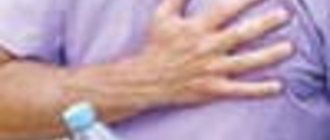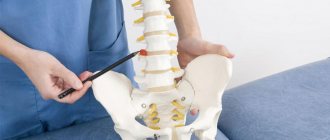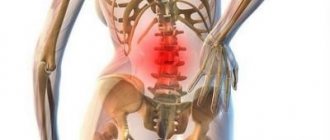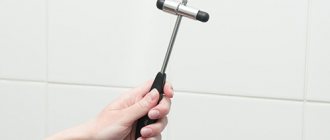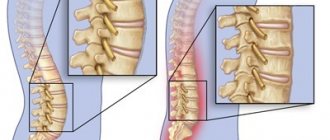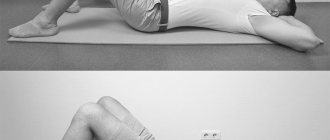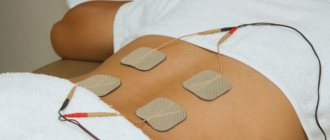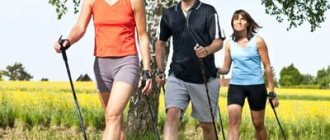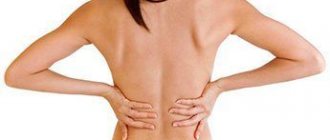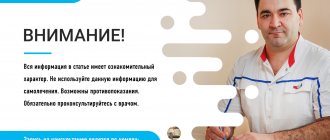- When to contact
- Types of procedure
- What diseases does it treat?
- Diagnostics
- How does the session work?
- Contraindications
- Advantages
Manual therapy is the use of hands for the purpose of therapeutic effects on the patient’s body using special techniques and techniques.
The goal of treatment is to adapt the body to stress, increase the body’s adaptive capabilities and, as a consequence, reduce pain, increase mobility in the spine and joints. All techniques are performed by a doctor of manual therapy with special education and experience. The complex of techniques of a chiropractor is based on techniques of manual influence on the body to correct biomechanical disorders. Manual influence is based on the principles of neurology, orthopedics, and neurophysiology. The difference from conventional massage lies in the impact not only, and not so much on soft tissue, but also on joints, intervertebral discs, internal organs, and cranial rhythm.
Clinic "CHILDHOOD Plus" offers to make an appointment with a chiropractor. The specialist will conduct a diagnostic examination, examination, and develop individual comprehensive treatment and rehabilitation schemes. We guarantee systematic monitoring of treatment results, gentle effects and high benefits of treatment.
Prices for manual therapy treatment
| SERVICES LIST | PRICE, RUB. |
| Soft manual techniques (45-60 min.) | 7 500 |
| Osteopathic techniques (30-75 min.) | 7 500 |
| Magnetic Vacuum Acupuncture | 1 600 |
| Intra-articular administration of a drug (excluding the cost of the drug) | 4 400 |
| Intra-articular injection (diprospan) | 5 500 |
| Orthoplasma into the joint | 7 000 |
| Intra-Articular PRP Injection | 6 500 |
| PRP therapy for tendonitis, ligamentitis, contractures | 6 500 |
Contact us
Call now
8 (495) 803-27-45
Make an appointment through our service
Make an appointment
Main symptoms of pathology
With the development of lumbar osteochondrosis, characteristic symptoms are observed:
- The pain, localized in the lumbar region, is acute and sharp. The symptom appears when performing movements; in later stages it can occur in static positions.
- Partial or complete numbness of tissues in the lumbar region, loss of sensation in the lower extremities.
- Violation of the functionality of the digestive organs and genitourinary system.
- Irradiation of painful sensations towards the thigh.
To exclude the development of complications, you should consult a doctor at the first symptoms indicating a lumbar intervertebral hernia. A specialist can recommend diagnostics already at the stage of discomfort in the lumbar region or with minor pain, which will help determine the pathology in the early stages.
The main causes of the development of osteochondrosis of the lumbar spine
The occurrence of osteochondrosis and accompanying pathologies (protrusions, intervertebral hernia) is caused by improper distribution of the load on the spinal column, both in motion and at rest due to postural disorders. The pathological process starts when the mechanical load on the intervertebral discs is exceeded, which, due to uneven compression, contributes to thinning, cracking and destruction of the fibrous rings. This leads to the appearance of a hernia.
Restorative treatment using manual therapy methods is aimed at eliminating the causes of pathology, namely, returning the spinal structures to a physiological position for proper load distribution. This method of exposure is justified for use at any stage of lumbar osteochondrosis, including those complicated by protrusions and intervertebral hernia.
Osteochondrosis
Osteochondrosis is a degenerative-dystrophic disease in which it is important to have a comprehensive effect on the body. First of all, it is important to return the spine to its normal shape, as well as stimulate metabolic processes. The doctor may use the following techniques and techniques:
- quick movements to restore joint mobility;
- relaxing effects to relieve muscle spasms and reduce the severity of pain;
- gentle traction to normalize spinal mobility, improve blood supply, lymph flow, and metabolic processes.
You can achieve noticeable improvement after the first session. At the end of the course, pain, dizziness, tinnitus disappear, and normal range of motion in the neck and shoulders is restored.
The price of manual spinal massage is not the only advantage; this method of treatment is preferred for other reasons:
- versatility – the ability to treat osteochondrosis of any part of the spine;
- safety - unlike drug treatment, the method has few contraindications, and all techniques are used only after a thorough diagnosis by an experienced specialist;
- painlessness – the actions of a chiropractor do not cause discomfort or pain;
- general strengthening effect – manual therapy improves overall well-being, stimulates the body’s own resources for recovery;
- effectiveness - the first results can be observed after just one session; by the end of the course of treatment, a lasting positive effect is observed in most cases.
Indications for manual therapy for intervertebral hernia
A course of manual therapy is recommended for the following symptoms of intervertebral hernia:
- The appearance of pain that accompanies destructive and degenerative processes in the spine at an early stage, bulging of the intervertebral disc determined by palpation.
- Impaired mobility in the affected segment of the spine.
- Acute and sharp pain in the lower back.
- Muscle spasms, neuralgia or slipped discs in the spinal column.
- Atrophic phenomena in the muscles of the lower back.
- Continuous pain that negatively affects the patient’s quality of life.
Kyphosis and lordosis
With a moderate degree of curvature of the spine, the doctor acts on it in such a way as to “put” the vertebrae, intervertebral discs, muscles, and ligaments in place. Typically, the course of treatment involves several sessions every other day. Pain may occur after exposure, but in this case this is a normal symptom. It is associated with the gradual movement of tissues trying to take the right position. After the course of treatment, noticeable improvements in posture, relief of pain and unpleasant symptoms are noted.
Treatment using manual therapy methods
The formation of an intervertebral hernia in the lumbar and lumbosacral spine can cause serious pathologies of the entire musculoskeletal system and internal organs, even in the early stages. Irritation and compression of nerve endings located in this area can occur already at the stage of protrusion.
The development of an intervertebral hernia in the lumbar region provokes complications such as pinching of veins, arteries and large vessels, which can affect the blood supply to vital organs.
Restorative treatment using manual therapy methods allows you to eliminate the symptoms of the pathological process, restore physiological mobility of the spine in the lower back, and relieve pain.
The implementation of a spinal rehabilitation program allows you to achieve a number of important improvements, including:
- normalization of blood circulation in the affected area,
- reduction of tension in the muscular-ligamentous apparatus,
- reduction of vertebral displacements,
- reducing compression of the vertebrae by increasing the space between them.
Why does my spine hurt?
The causes of spinal disorders are numerous and often difficult to avoid. The most unpleasant aspect of such disorders is that they can be painless, and simply slowly and asymptomatically destroy health for many years. Support for the body's systems gradually disappears, and the first signs of the disease appear. Most often this is discomfort and short-term pain of low intensity in the back. There are many reasons that can weaken the spine and cause functional blockade and pinching of nerve endings. These include: sports and automobile injuries, emotional stress, alcohol and drugs, infrequent physical effort without proper training, and poor sleeping position. To ignore this and not have your spine checked by a chiropractor means to invite and welcome the disease in yourself, in your body.
Pronounced clinical manifestations of this nosological group of diseases appear during the period of most active work activity and increase with age. At least two thirds of the world's population suffer from dystrophic diseases of the musculoskeletal system and related complications: muscular-tonic, autonomic, vascular and other neurological syndromes.
Basic manual therapy techniques
- Pulse. The therapeutic effect involves jerking movements of the hands, which are aimed at improving the mobility of the vertebrae. The use of the technique is often accompanied by a crunching sound, which is a consequence of the movement of synovial fluid in the joint capsule and is a normal variant.
- Mobilization. Relaxing movements of the same type gently affect the muscles located in the area of the affected vertebrae, reducing spastic contractions.
- Rhythmic mobilization. It combines relaxation with stretching of joints and vertebrae; when performing a massage, the given rhythm of movements is important, supported by the doctor throughout the entire treatment session.
- Positional mobilization. It is characterized by the slow execution of relaxing and rhythmic movements, which allows you to straighten the joints and stretch the vertebrae to their maximum amplitude, after which they are fixed in the achieved position for one minute. During the therapeutic effect, the extensor muscles contract and the flexor muscles stretch.
- Postisometric relaxation improves muscle mobility, which is provided by stretching forces after the patient has completely relaxed. The hand movements of the chiropractor are performed at a fast pace while maintaining the same rhythm. Each technique used is repeated five times, with minimal effort.
- Muscular-energetic effects are used to increase the amplitude of vertebral mobility, combining simultaneously muscle tension and relaxation techniques.
- Muscle-fascial release involves kneading muscle fibers and stretching them during a massage procedure.
To achieve the positive effects of manual therapy, not only the actions of a qualified doctor are important, but also the independent efforts of the patient. In accordance with the doctor’s recommendations, patients are prescribed a set of special exercises in the gym, which are performed under the supervision of a rehabilitation therapist - kinesitherapist.
Manual therapy methods are highly effective if the specialist performing the procedures has the necessary experience. The result of successful treatment will be partial, and most often complete restoration of normal functionality of the spine, elimination of pain in the affected area, restoration of the ability to move parts of the spine subjected to blockade, and relief of tension in the back muscles.
Stages of treatment procedures:
- Preliminary relaxation and warming up of muscles using standard massage techniques.
- Stretching, tapping, pushing, chopping the tissues and structures of the spine to relieve blockade, spastic tension and pain.
- Loading and stretching of the intervertebral discs to increase the distance between the vertebrae.
Consistent implementation of the course of treatment allows you to restore the normal flow of cerebrospinal fluid. With each manual therapy session, the density of cartilage in the intervertebral discs increases, the distance between the vertebrae increases, and the structures take on a physiological position.
Payment options for services
Cash payment
Cashless transfer
Payment by card
Payment on credit
The main contraindications to the use of manual techniques are:
- burdened with oncology
- infectious lesions of the spine
- tumors
- acute inflammatory processes
- recent injuries and fractures
- history of heart attack
- severe developmental anomalies of the spine
- bone tuberculosis
- pregnancy
Before attending a manual therapy session, be sure to consult with your doctor! The President-MED clinics employ highly qualified chiropractors with higher medical education and extensive experience!
Manual therapy methods for the lumbar region
The complex of manual therapy for the lumbar region includes many different methods of influence, which is due to the need to achieve complete relaxation of the back muscles. In the lumbar region, the muscular corset is characterized by maximum power, which requires significant effort on the part of the therapist to relieve tension.
Traction methods are the most effective. When treating a posterolateral hernia, the patient lies on his stomach while the therapist stretches the spine while holding the patient's legs. When performing the procedure, it is important to maintain a stable rhythm of movements. After the initial set of manual therapy, a break is taken, and a day later the procedure is carried out with great effort on the part of the specialist.
The push method is used when more gentle techniques do not allow the vertebrae to be returned to their natural position. There is a certain risk when using this technique, so the chiropractor carefully examines the patient and determines the need for its use individually, based on the patient’s condition.
A full course of treatment using manual therapy methods can reach 15 procedures. After completion of treatment, a break will be required to rest the body, which should be at least 2 weeks. After this, you can repeat the sessions. The optimal result of treatment and prevention of relapses is achieved by periodically undergoing courses of manual therapy (at least 3 times during the year). The techniques are used to restore the spine in cases of intervertebral hernia; the maximum effectiveness of the procedures is observed in the early stages of the disease, when the protrusion of the vertebrae is not too pronounced. An experienced therapist will reduce pain caused by degenerative changes in the intervertebral disc in several procedures.
On the day of your initial appointment with any doctor in our Neurology clinic, you can undergo manual therapy or massage with a 25% discount. This way you can form an objective opinion about the services of our clinic and the quality of work of our specialists. And if after this you decide to pay for the full course of further procedures, you will receive a 10% discount on the course of treatment.
Contraindications
Despite the fact that manual therapy brings great benefits to the entire body, it, like any other medical manipulation, has its contraindications.
Absolute contraindications include:
- malignant neoplasms;
- acute inflammatory processes of any localization;
- thrombosis;
- scoliosis stage 3;
- chronic arterial hypertension;
- fresh injuries, skin damage in areas of intended manipulation;
- mental disorders, epilepsy;
- recently suffered a stroke, myocardial infarction.
To exclude or confirm the diagnosis before the procedure, the chiropractor gives a referral for a comprehensive diagnosis.
Positive effects of treatment of lumbar osteochondrosis and hernia
Manual therapy procedures are aimed at eliminating muscle spasms, restoring vertebral mobility and relieving pain symptoms. By returning the physiological position to the structures of the spine, the therapist removes excess load from damaged areas of the lumbar region, which helps to inhibit degenerative processes and heal protrusion and hernia.
The spinal column is a single kinematic chain in which each section is closely connected with the previous reflex pathways. When performing manual therapy procedures, the specialist covers not only the directly damaged area of the lower back, but also the adjacent thoracic and cervical region.
In addition to the therapeutic course of manual therapy, the patient may be recommended: physiotherapy, acupuncture, blockades, etc. The complex effect of these methods allows you to eliminate aseptic inflammation in the damaged area, relieve tension and spasms in the muscles, improve blood circulation, metabolic processes, restore cartilage and bones. In cases where the patient's pain is not very pronounced, manual therapy is recommended immediately.
In the acute course of the disease, pain relief therapy is first carried out, for which paravertebral type medications are used, administered intramuscularly, orally, intravenously, rectally, and physiotherapy is prescribed. Wearing a corset has a good effect. In the subacute period, manual therapy can be performed without restrictions.
A course of manual therapy is carried out in combination with other procedures for
enhancing the effect of treatment. Depending on the diagnosis, this may be acupuncture, physiotherapy, osteopathy, etc. These procedures complement each other and can be completed in our center.
Features of the event
Manual therapy involves the use of hands as the only instrument of influence. There are several basic techniques:
- manipulative: these are short, medium-intensity jerk-like movements, with the help of which a specialist restores the mobility of joints and vertebrae;
- mobilization: movements that restore joint mobility, improve blood flow, gently stretch the spine, relieve swelling by normalizing lymph flow;
- soft: the technique is designed to normalize muscle tone, relieve pain, eliminate ligament pathologies, make them more elastic and mobile. It does not involve sudden movements.
There are other techniques: craniosacral therapy, shiatsu massage, lymphatic drainage, kinesiological techniques, etc. In each clinical case, the specialist selects a set of techniques, taking into account the disease, symptoms, and condition of the patient.
The frequency of sessions is determined by the state of health and the goals set. Usually up to 2 procedures are performed per week, but for some diseases it is advisable to visit a chiropractor more often. The number of sessions required also varies, in one case three are enough, in another a course of up to 15 will be required.
The duration of one session is 10-30 minutes.
Who will treat you?
The Innovative Medical Center employs qualified specialists who deal with the treatment of such spinal diseases every day. Numerous reviews on our website and other sources on the Internet confirm the high level of services provided.
Dremin Evgeniy Vitalievich
neurologist, reflexologist, chiropractor.
6 years of experience. more
Learn more about manual therapy
Our approach to treatment
The growing popularity of manual therapy and other methods of therapeutic and restorative medicine - osteopathy, kinesiology, reflexology, homeopathy, hirudotherapy - is currently explained, first of all, by pharmacological oversaturation, which has become one of the main problems of modern medicine.
And the methods of treatment and health restoration used in our clinic can significantly reduce the intake of medications, and in some cases even completely do without them.
